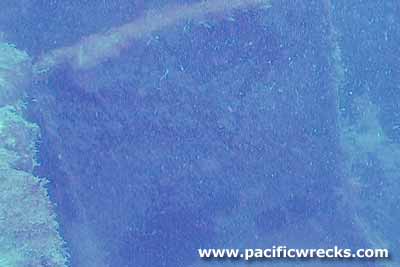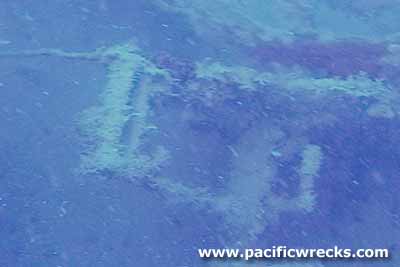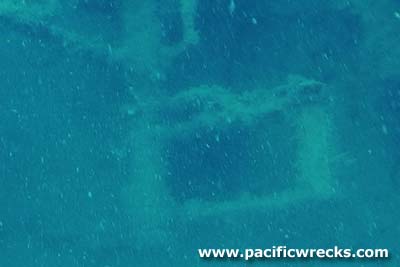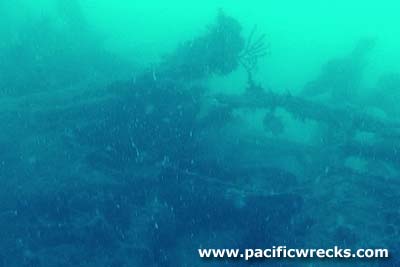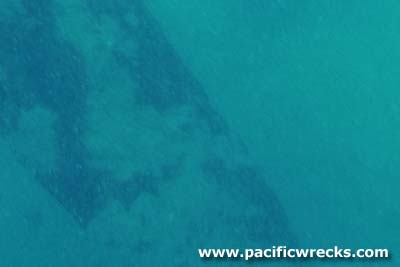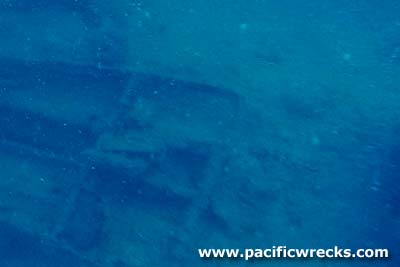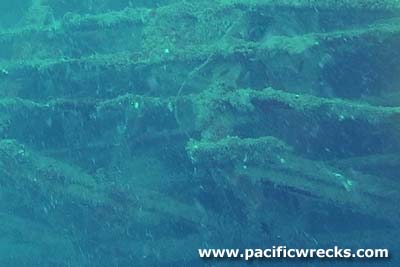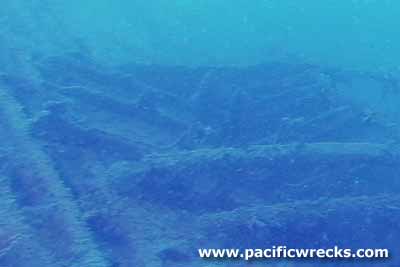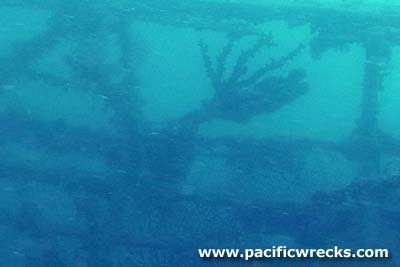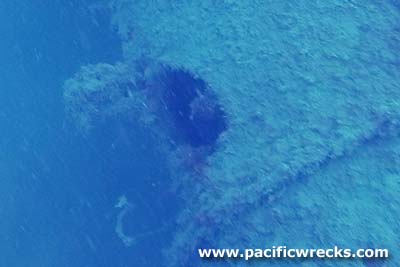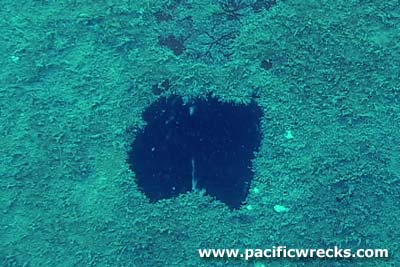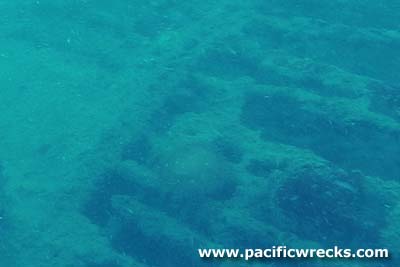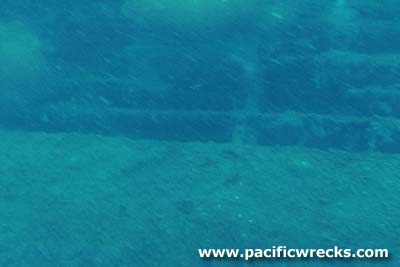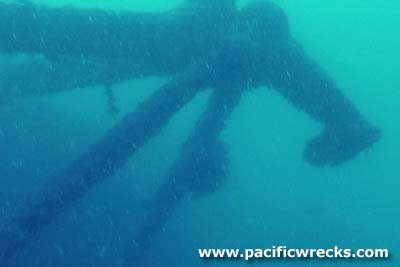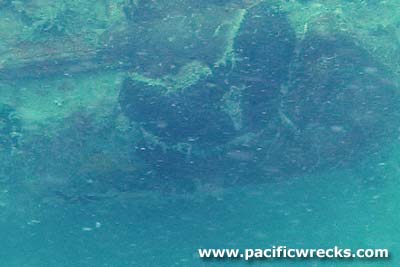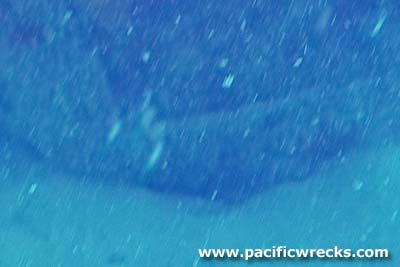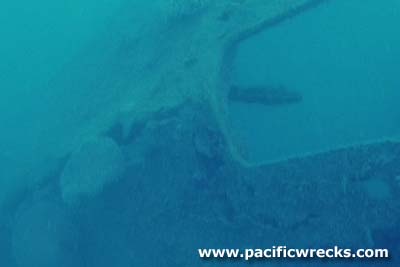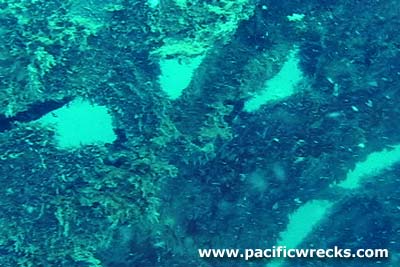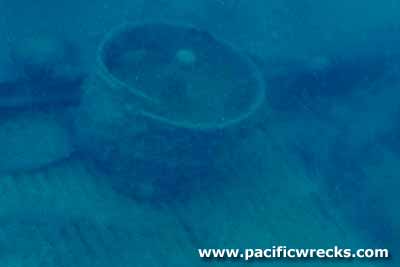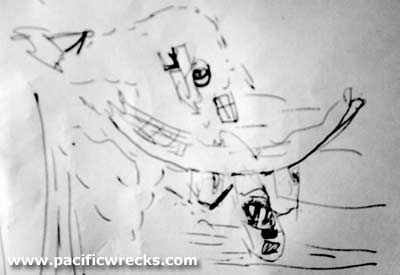RAAF PBY-5 Catalina sunk off Napa Napa in Fairfax Harbor
On February
28, 1942 two flying boats Catalina A24-3 or Catalina A24-6 were at their moorings off Napa
Napa, in Fairfax Harbor. Both were strafed, set on fire and sunk by six A6M2 Zeros from the
4th
Kokutai led by Harutoshi Okamoto during an air
raid against Port Moresby. They drifted onto the reef, and sank. The wreckage of one of the two was rediscovered in 2003 by the POMSAC (Port Moresby Sub-Aqua Club) while the InterOil Refinery was being
constructed nearby.
Discovery of the Catalina
In 2002 Napa Napa was being developed as
a oil refinery facility by InterOil. At that time, SCUBA divers surveying
for the
factory rediscovered
a PBY Catalina wreck on December 16, 2003 just offshore. Evidence
that the wreck had been discovered previously was indicated by the top
of the cockpit was cut off, perhaps in a salvage attempt during
the war. But,
the wreck was unknown to the dive community.
To
this date, the Catalina's precise identity has not been proven but is either PBY-5 Catalina A24-3 or PBY-5 Catalina A24-6 both sunk on February 28, 1942 at their moorings when strafed by A6M2 Zeros from the
4th
Kokutai.
A controversy
developed around the wreck for several reasons. First, the local
SCUBA associations wanted to dive the wreck, but the company developing
the oil refinery, InterOil, wanted the area off limits as it is offshore
from their factory. The SCUBA association, lead by Mark Palmer fought
to keep the site open to divers. Secondly, live bombs were discovered
aboard the wreck. Divers
from MilSearch, an Australian munitions disposal team were hired to clear
the
site of bombs.
They dredged around the wreck, and then removed a dozen 250kg live bombs,
and dumped them miles out to sea, where they would not be disturbed.
Today, the area
is
again
off limits
as
it is
inside the boundary of the Oil Refinery's unloading area. But,
many SCUBA divers have dived the site with permission.
Mark Palmer adds:
"The damage you mention was already done prior to my finding it
and it is obvious that someone had found it some time ago but when they left
PNG the whereabouts left with them. The machine gun was taken, I believe,
by MilSearch when they took the bombs off it at the direction of InterOil
-
contrary to directions from the
curator of the National Museum. This Catalina is written up by a friend
of mine in Australia named Michael McFadyen. I want to keep a permanent
record with our dive club - the Port Moresby Sub Aqua Club (POMSAC) so that
knowledge of wrecks does not get lost or forgotten."
John Douglas adds:
"I dove the site before the bombs were removed. The water was
somewhat murky, and the wings were sagging inward, and had soft
and fan corals growing on them. I
saw a large circular object, that might have been one of the bombs in
the tail."
Harumi Sakaguchi adds:
"In the first dive, visibility was so poor that I had to be guided
by a search rope used by a more experienced diver-friend of mine. But I can
recall vividly the excitement I felt as I finally touched the Catalina that
had been sunk by Japanese Zeros through the first staffing attack of Port
Moresby Harbor [Fairfax Harbor] by Rabaul based Zeros in the Pacific War. Luckily, visibility
was far better in my last dive. Through the preceding dives, I had almost
memorized the contours of the Catalina, wrecked and at rest in the murky
bottom. Now, I could discern the plane's grandeur; though broken and crumbled,
it looked menacing and determined to fight. I lingered as long as I could
on that dive that I knew would be my last one of this historic plane. Fleetingly
something made me remember the body of Nancarrow had never been recovered.
Perhaps he was near me, trying to touch me in the opaque water. Prodded by
my buddy Mr. Mark Palmer, I surfaced, with utmost reluctance. The strong
sun blinded me. Port Moresby, across the harbor from Napa Napa, was afloat
between the sea and the sky, like a city in a world of fairy tale, utterly
oblivious of the event of 28 February 1942 that touched the lives of so many
people - including myself 62 years later."
Justin Taylan adds:
"I
dove the site in August 2004. The first day I attempted to dive, it was
too murky, almost zero visibility. The
wreck is located just off a coral reef shelf in about 45-50 feet of water.
The second attempt, the visibility was only about a meter or so. Still,
the wreck is an impressive site. The massive wingspan is bow shaped,
and heavily damaged on one side and resting against the reef wall, burned
out. The bottom is sandy. The
nose is fully intact, and in the cockpit both pilots seats are there, rudder
pedals
and
instrument
panel. The tail is broken off and twisted behind it, possibly move
during the bomb removal. Both engines are angled downward, and the
propeller of the starboard engine was visible. I made a rough sketch of
the wreckage afterwards. The video footage recorded was murky only details
were visible close up, not the overall view of the wreck."
Photograph by Imperial Japanese Navy (IJN), February 28, 1942
Stills from video by Justin Taylan, August 2004
Second Catalina
The wreckage of a second Catalina (pieces only) was discovered slightly to the south,
this was undoubtedly the other Catalina. This wreckage is located
by InterOil, near the new harp built for unloading oil tankers. The
area is considered off limits to divers. The pieces were discovered during the construction. Likely,
the other Catalina burned more and less of it sunk or has otherwise disappeared.
References
Wings Official Magazine of the RAAF "RAAF 'Fleet' Rescues" by P/O C. A. Burley page 10-11
"Once the captain of a Catalina lost his anchor. He asked if Lega and Loi [Papuans working for RAAF Air Sea Rescue] could dive down into Moresby Harbor [Fairfax Harbor] an get one from a Cat [PBY Catalina] sunk at its moorings in 45' of water early in the blitz [February 28, 1942]. He told the boys how to open the door and where to look for the anchor in the aircraft. Lega and Loi did it in 10 dives. Each time they stayed under for 1.5 to 2 minutes. They then brought up the anchor, weighing the better part of 20 lb, up without worrying about tying a hauling line to it."
|

